(Skip to “I’m done with my rock facts now” if you’re here for the travel stuff only 🙃)
We made it to Tucson!
After a week of working our way south, we finally made it to our first destination: Tucson, Arizona. For two weeks every January/February, Tucson hosts the largest & most well known gem & mineral show in the world. The “show” actually consists of over 40 shows that span the 2 week period with vendors large & small from across the globe.
So of course I had to attend!
Tucson is in the southwestern United States, which is where the majority of turquoise I use is mined — so I knew I’d be able to meet a good number of lapidary artists1 with direct connections to the mines themselves and learn more about their production process!
I ended up attending 5 wholesale shows over 3 days: JOGS, G&LW Holidome, G&LW Gem Mall, GJX, and AGTA (& that was more than enough to meet my budget 🥴)
Here’s the spark notes:
JOGS: Eclectic, fun to walk around, LOTS of turquoise (I spent a good amount of time here), and found some agates here as well!
G&LW Holidome + G&LW Gem Mall: So many beads. Probably 200 bead vendors (I’m not kidding). There where two turquoise vendors though, one of which was incredible & I snagged a bunch of gorgeous white buffalo from! (See the photo below 😍)
AGTA: Unique stones — think petrified wood, fossils, opals, etc. My only impulse buy of the trip (I count that as a win) was for some fossilized dinosaur bone and petrified wood (found in Utah and Washington, respectively)!
GJX: Diamonds & precious stones everywhere. Only one turquoise vendor — but their price was really good, and the stones were high quality!
The biggest perk when buying in-person is that I can pick out my favorite stones from a large selection. Online, stones are sold in batches. So you may like 90% of the stones and still buy the batch, but end up not using a handful of what you’ve purchased. Chips or cracks in the cabochons2 are also difficult to see in photos online! So even when the stones were sold at their typical price (instead of wholesale) at these shows, I was still saving money because I could confirm the quality of every piece I bought & I know they’ll all be used!
Another huge perk of buying in-person at these shows is that the sellers are closely connected to the mines and often process & stabilize the stones themselves! Turquoise is mined in one of two ways:
It’s either mined naturally, which is when the stone has been naturally hardened in the earth and is mined by hand. Or, it’s mined via explosives (the more common and economical method). When the turquoise is mined via explosives, it ends up being a chalk-like consistency — which is obviously not strong enough to be turned into jewelry. So, the turquoise has to be stabilized. The stabilization process uses an epoxy mixture, but the exact process is different between every producer. Some also use dyes in their stabilization process (which is a big no no in my book).
Dyed stones do not last the test of time because any chip in the stone will show the dye! The outside of the stone will be a different color than the inside. If a non-dyed piece chips, you can sand it down & polish, and it will look good as new. When buying online, lapidary artists may not be directly connected to the mine or whoever stabilized the stone. So buying in Tucson had the huge benefit of confirming no dyes were used!
All in all, I got a great haul of turquoise and agate stones I am so inspired to work with! I cannot wait to showcase the beauty of these stones in some minimalist fine jewelry pieces ✨
Ok,
I’m done with my rock facts now —
If you can’t tell, I had a great time seeing all the rocks and gems the Tucson gem shows had to offer (I will be back next year). But I also had an incredible time seeing the sites around Tucson, specifically the Saguaros! 🌵
I am from the Pacific Northwest. Which means my idea of desert is flat (and therefore boring to look at). Tucson has forever changed my opinion of deserts, and I am officially a cactus lady.
We found some BLM3 (free!) camping just outside of Tucson where we lived amongst the Saguaros —
No neighbors, a view of the mountains, and a forest of Saguaros all around us. It doesn’t get better than that! Photos do not do this landscape justice, so I included a video compilation of some drone footage from this area at the top of this letter — it is so, so gorgeous.
Our last day in the Tucson area we also visited the Saguaro National Park (but I think our campsite had the same amount of Saguaros). The National Park had a bit more biodiversity in underbrush which added a lot to the landscape’s beauty!
Next letter:
More cacti, some new truck camper friends, and my first attempt at silversmithing on the road! Be sure to subscribe to get notified —
Thank you so much for being here & following along! Talk soon 🌵
Lapidary artist: An artist that processes stones from their raw form into pieces ready for jewelry! This includes cutting, shaping, sanding, and polishing the stone.
Cabochon: The type of cut I use in my jewelry. This is when the stone is cut with a flat bottom and a rounded top.
BLM: Bureau of Land Management: Where we try to camp! Most BLM land is free to camp on (dry camping only), so we try to stick to these areas when picking campsites.


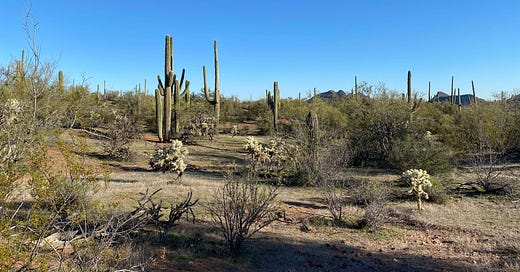





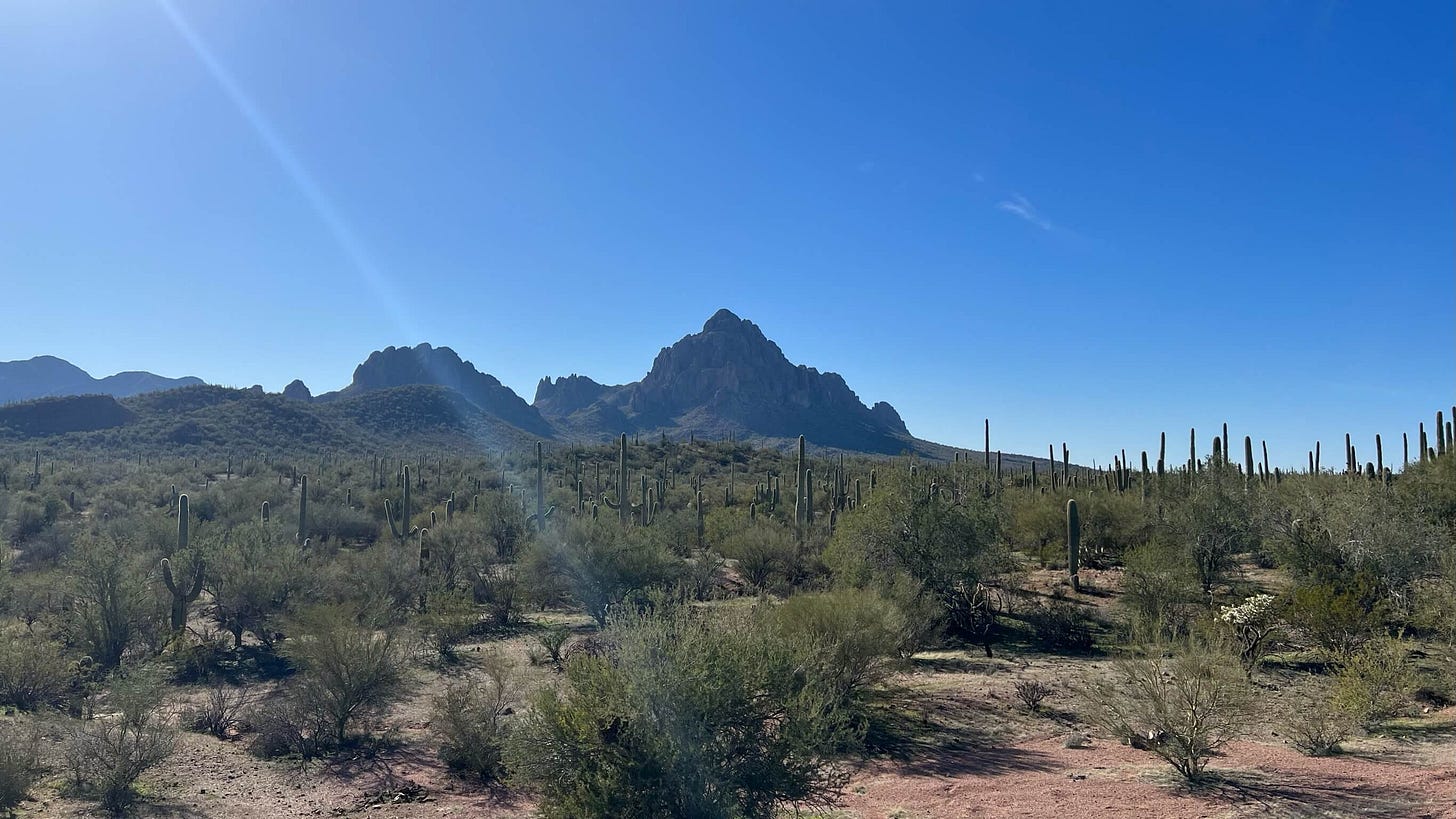


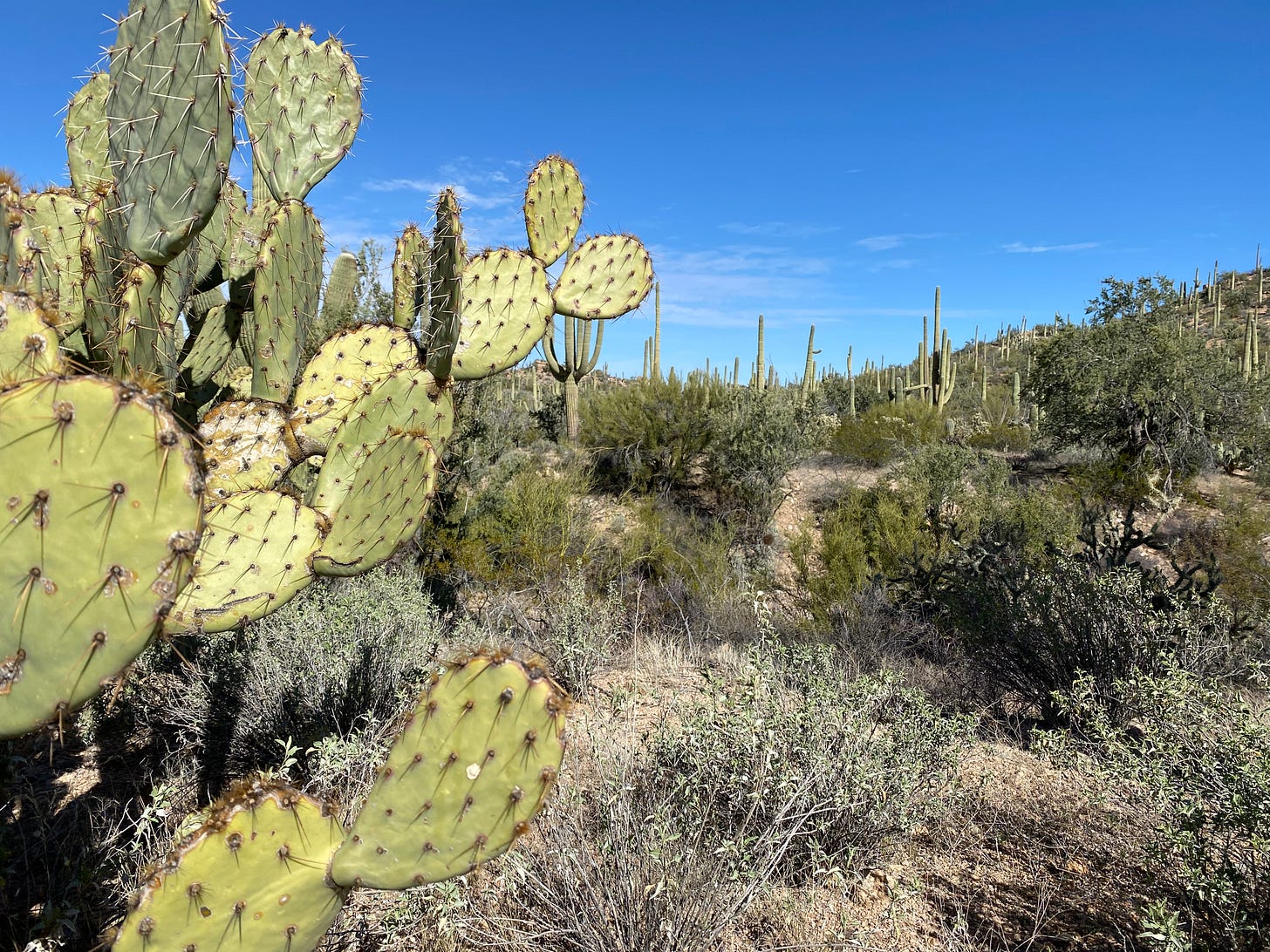

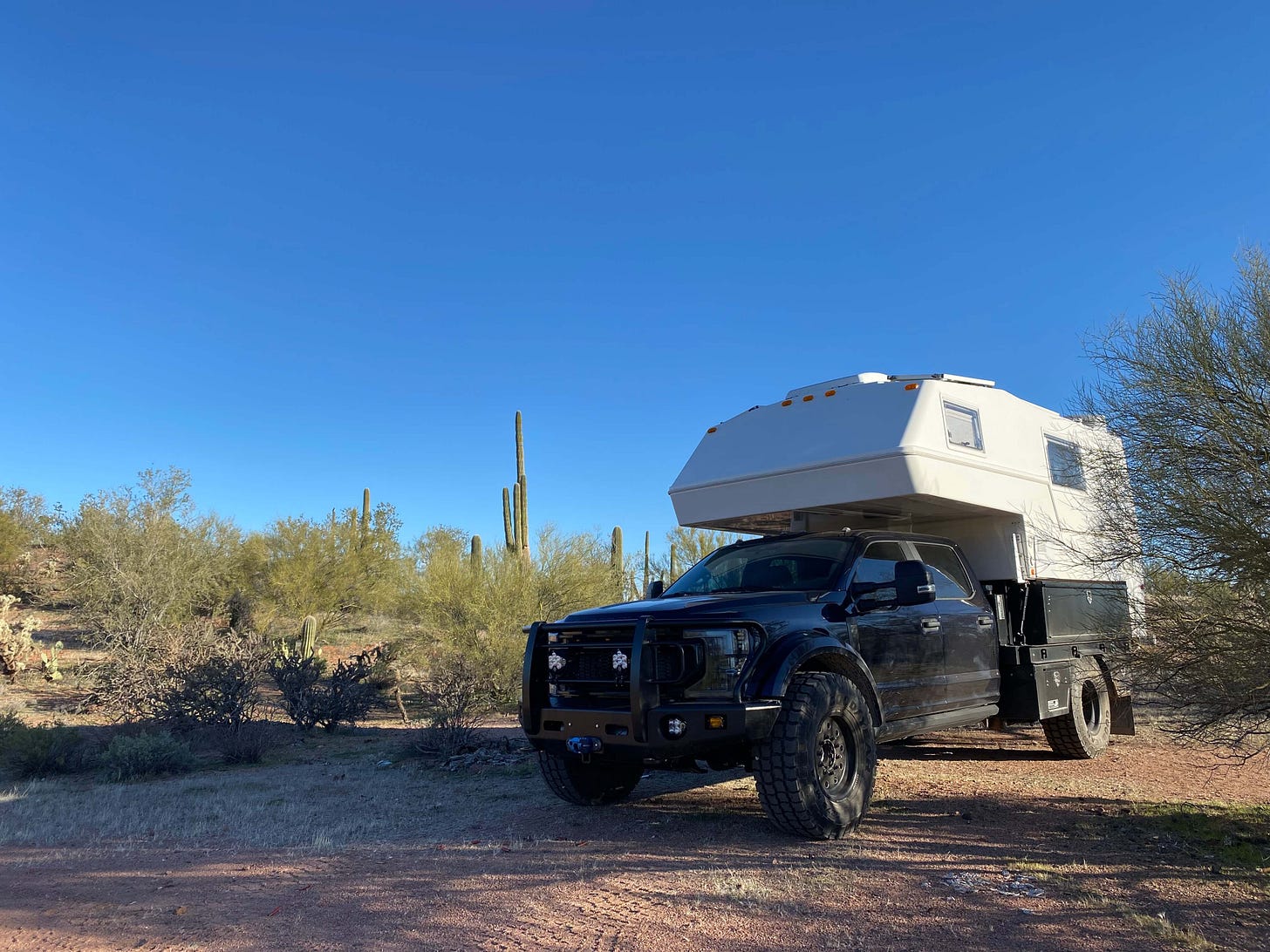
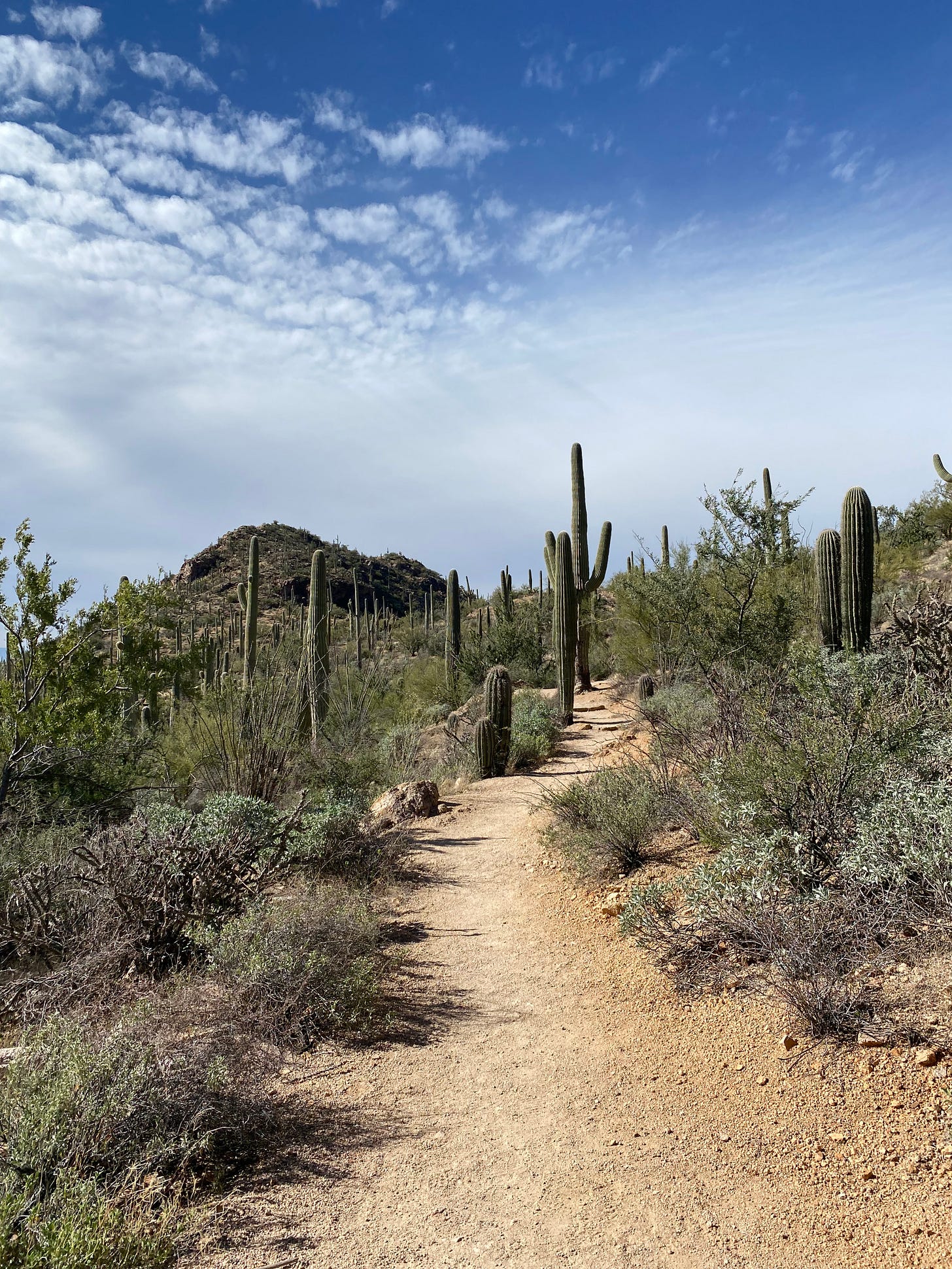


Share this post